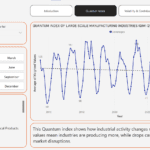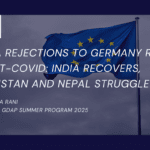
How Has the Beverage Industry Performed in Pakistan Over the Past Decade?
June 10, 2025
Visa Rejections to Germany Rise Post-Covid: India Recovers, Pakistan and Nepal Struggle
July 11, 2025By Sana Hameed
Intern – GDAP Summer Program 2025
The Aga Khan University
Access to clean drinking water remains deeply unequal across Pakistan’s rural areas, according to data from the Mouza Census Dashboard. Nationally, only 12% of mouzas have access to government piped water as a drinking source. In contrast, the majority rely on self-supplied options such as hand or electric pumps.
A province-wise comparison shows sharp disparities. Gilgit-Baltistan (GB) leads with 51% coverage, while Sindh (4%), Punjab (7%), and Islamabad (5%) lag far behind. Despite having better infrastructure in cities, these provinces’ rural areas often lack formal water delivery systems.
|
Province |
Govt. Piped water % |
Personal Pump % |
|
Gilgit Baltistan |
51% | 2% |
|
Sindh |
4% |
94% |
| Punjab |
7% |
89% |
|
Islamabad |
5% |
94% |
At the district level, inequality continues. In GB, Kharmang shows strong performance with 88% access, while Diamer trails with only 10%. Factors like terrain, population density, local governance, and targeted investment help explain these variations.
These findings highlight a critical need for targeted infrastructure planning and policy attention—especially in underserved districts and provinces. With growing pressure on water resources, ensuring equitable access to safe drinking water must be a rural development priority.
For More Information:
https://galluppakistandigitalanalytics.com/mouza-census-insights/
